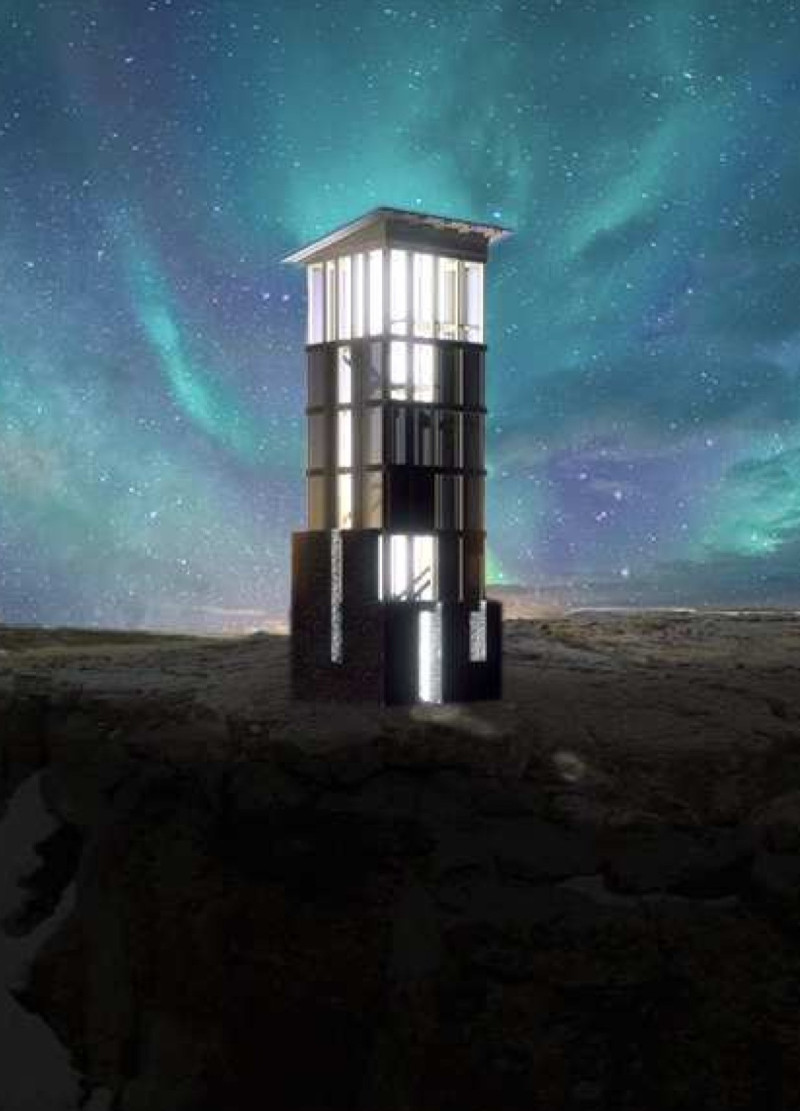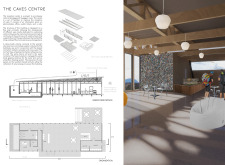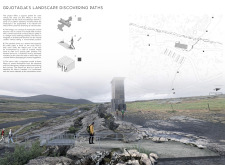5 key facts about this project
The design around the Grjotagja caves combines visitor facilities with the natural landscape. In a location that features rich geological characteristics, the goal is to improve the experience for those walking the trails while offering necessary services. The design connects hiking paths with public transport options, highlighting accessibility and inviting interaction between the structures and the environment.
Central Reception Building
At the core of the design is the central reception building, which stands at a crossroads of several hiking trails. This space provides important visitor amenities such as information services, administrative offices, public toilets, and a café. By offering these functions in one place, the reception encourages visitors to gather, explore, and engage with the natural surroundings.
Observation Tower
Nearby, the observation tower emerges as a notable structure within the setting. Created as a multi-level platform, it offers wide views of the surrounding area. Visitors can observe geological features, including the notable tectonic fissure, from a new perspective. The tower is also equipped with lights that come on at night, providing a guiding point for hikers navigating back to the main hub.
Landscape Support Modules
The design includes three landscape support modules, which fit into the natural contours of the land. These modules help define visitor pathways, making navigation easier while protecting the ecological balance of the site. By enhancing access and improving the experience for visitors, they play an important role in the overall plan.
Material Usage
Sustainability is a focus in the selection of materials. Local stone is used for the reception building to create a solid connection with the surrounding landscape. Plywood features in structural elements like beams and slabs, while the observation tower uses a mix of plywood planks and a semi-transparent polycarbonate skin. This choice of materials meets functional needs and helps the buildings integrate with their environment.
The attention to how the structures are positioned in relation to the natural features emphasizes the unique qualities of the Grjotagja caves area. This design reinforces the importance of nature within the visitor experience.






















































